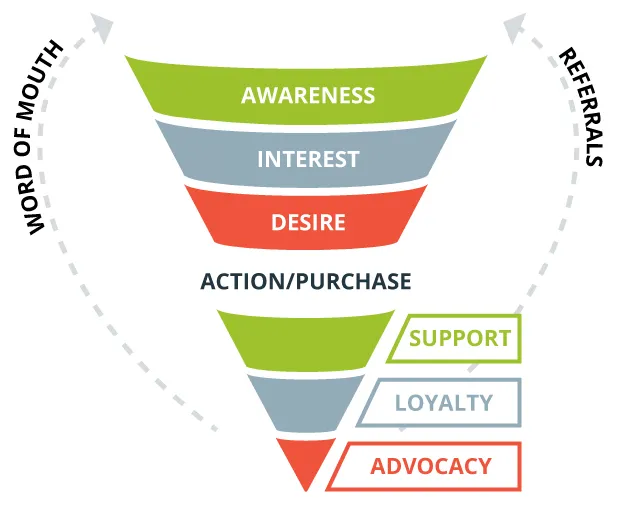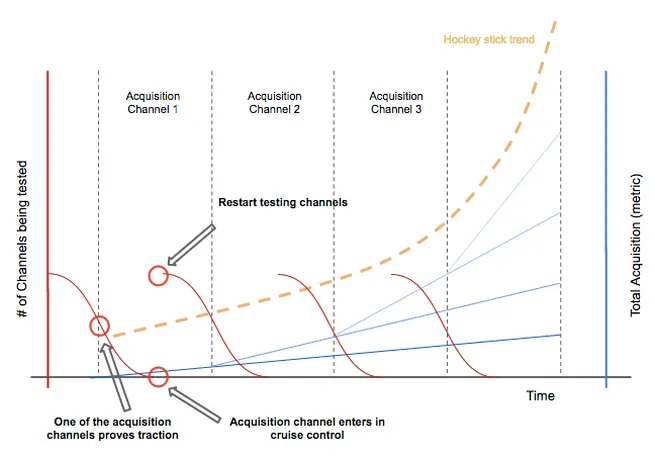How startups are inverting the marketing funnel
Some weeks ago I was discussing my first months in Growth for CompareEuropeGroup, the largest financial comparison group in Europe, following the success of its sibling group in Asia. CEG has ventures in Denmark (Samlino.dk), Finland (VertaaEnsin.fi), Belgium (TopCompare.be) and Portugal (ComparaJá.pt), all of them seeing considerable growth.
Sat down in a nice coffeehouse in sunny Lisbon, an experienced digital marketer was inquiring me how is our approach to the customer conversion path, and what is the storytelling we use to attract the customer.
My very early-stage experience forced me to think quickly to provide an answer: I haven’t outlined one. He was surprised. I later explained a bit more:
In order to grow in a sustainable way (OK, as much as feasible…), I cannot think of the traditional marketing funnel to outline my digital strategy. I don’t have neither the budget nor sufficient insight to know what is the storyline I will tell to my customer.
A bit surprised to hear this, he let me carry on.
The approach we take is to use, optimise and exhaust the more intent-driven channels and then utilise the revenue growth to reinvest in more awareness channels.
So you’re not telling a story to the customer, he replied. And with this sentence I realised that he was missing the point.
This is the beauty of digital channels. The traditional strategy, planning and execution cycle that lasted several months is now shortened to days. Moreover, it is iterative more than ever. If I can have (almost) instant feedback, why not letting the customer tell me what works for him/her?
The more interesting part is how this affects the marketing funnel. Looking at the traditional funnel (see below), traditional businesses rely on hypotheses to define the which story should they tell the users. “Let’s use this TV ad to create Awareness, then outdoors will bring Consideration, Conversion is done with a door-to-door”. Most of theses hypotheses come from our own assumptions of the product and the customer, but were they validated? Good marketers have done their job and ran some focus groups, but were these representative? We may have different answers to the questions, but the bottom line is that the digital world allows us to test these hypotheses in a very short period and take actions on the outcome.

Why am I being fussy about this so-called inversion? Sustainability. In order to grow these start-up businesses where cash is scarce (despite the usual hype around funding rounds, in which cash comes to allow marketing and operations to survive), the traditional marketing funnel is simply not available. TV is not an option, outdoors hardly. The actual only option is capture the customer that is ready to buy. For a B2C product, start-ups aim for search engines, whereas B2B typically requires more people interaction (marketing becomes sales).
Andre Albuquerque (Uniplaces) was brilliant at explaining how channel utilisation is streamlined and put into cruise control, freeing up resources to explore other channels:
After enough time of deepening the channel you get to cruise control (acquisition cost is maybe stable or improving at a reasonable % rate), so it’s time to restart testing more channels to grow your metrics (second red circle), and number of channels being tested increases again (third red circle), and the loop restarts. Overtime you stack up acquisition channels and your absolute metric values grows until you hit the holy grail trend of the hockey stick curve (orange line).

Following what I said earlier, the first logical channel to explore are Action-related channels, such as Search, since it captures the customer with greater intent to buy/convert. E-mail marketing and Affiliate traffic can be also be included in this bucket, the former requiring a level of engagement with the user (or not, since several tools can stereotype your customer and provide you a “look-a-like” persona).
The natural next step is to move on to Interest-based channels, such as Content (through your own blog for instance) and Referrals. Building on top of your persona (created through data gathered in the Action channels), you can now reach out to a greater audience, that still resembles in some aspects your current customers.
Display and Social channels belong then to the Awareness layer of the marketing funnel, which are available to reach in a targeted and segmented way a greater, less-informed audience. These channels are then used when all the channels “below” have matured and been streamlined. Finally, TV and Outdoors can be used a later stage to “shout to the world” about your products’ existence. Most start-ups take their time to rely on these since targeting is much more inaccurate.

As mentioned above, the good performance of a channel at the bottom of the funnel will fund the development of the upper layer of channels, often at higher cost of acquisition (CPA). How can a start-up support a growing CPA? Scale, scale, scale. Cross-sell. Get more money from each transaction, or get more transactions. Whatever model the business is supported on.
Summing up, you can construct your customer path by inverting the traditional marketing funnel. Start by the channels that offer an higher buying-intent customer, optimise, streamline, move up in the marketing funnel by selecting the next appropriate channel. Reinvest your earnings to climb up the ladder and reach a larger audience. The slippery funnel will be hard to climb, but the challenge is the exciting piece.